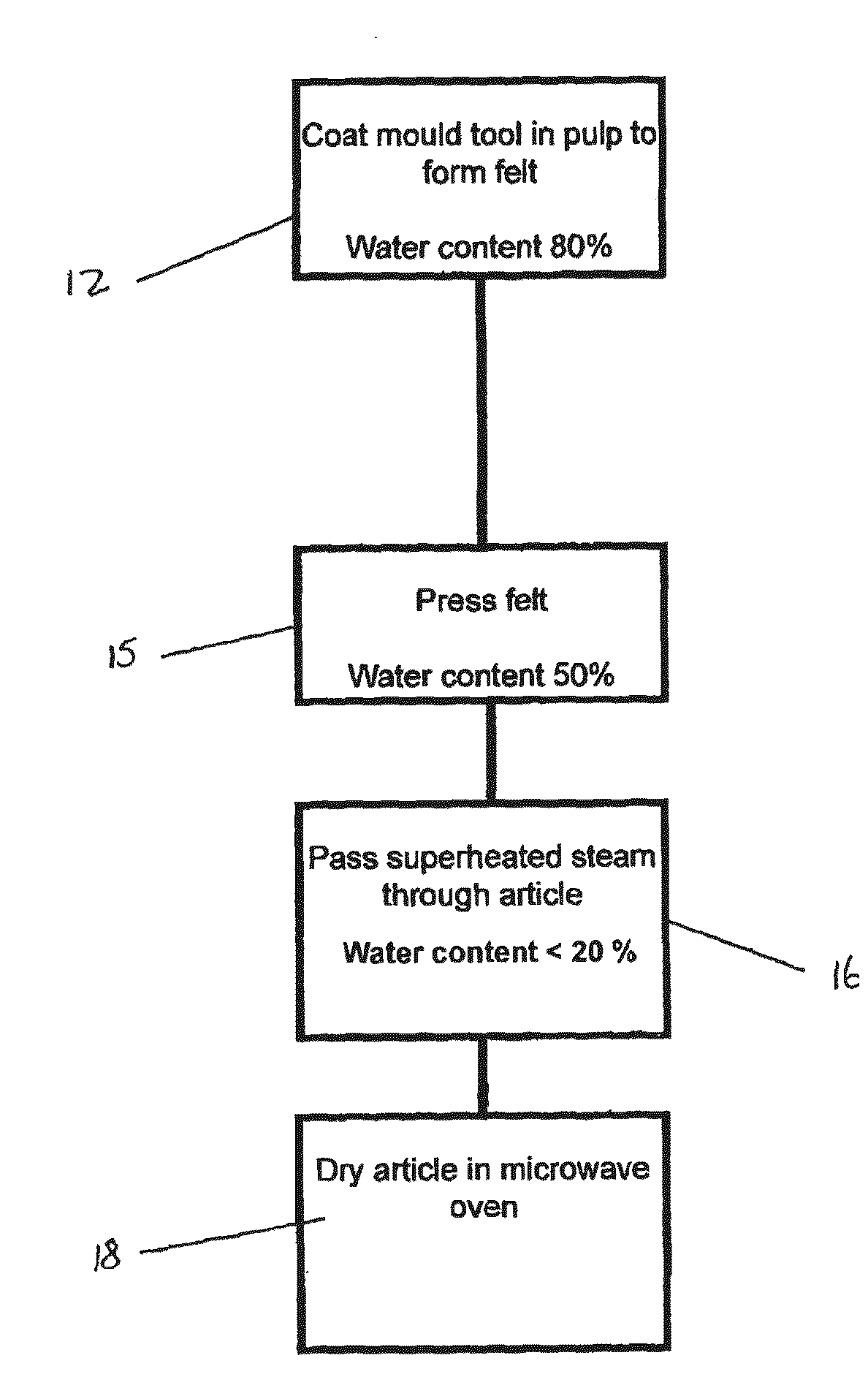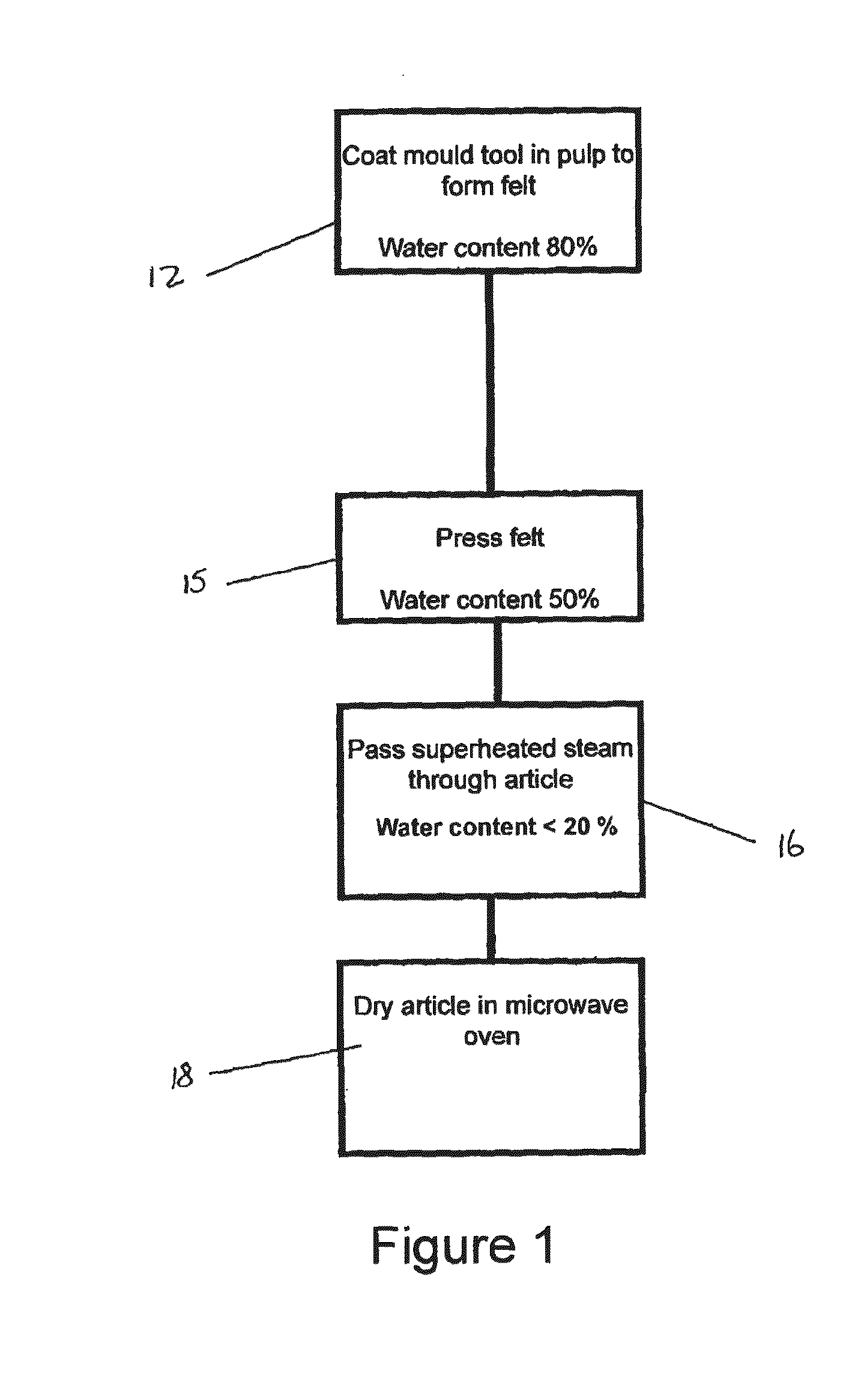Method and apparatus for forming an article from pulped material
a technology of pulped materials and methods, applied in the direction of presses, manufacturing tools, textiles and paper, etc., can solve the problems of difficult to obtain high dimensional consistency and stability of products, the rigidity of the article cannot be removed, and the manufacturing process is expensiv
- Summary
- Abstract
- Description
- Claims
- Application Information
AI Technical Summary
Benefits of technology
Problems solved by technology
Method used
Image
Examples
Embodiment Construction
[0037]As shown in FIG. 1, in one example of the formation of an article by moulding, the article is first moulded (12), is pressed to reduce the water content (15), and then treated with superheated steam (16) whilst on a tool to further dry the article. The article may then be further dried, for example using on tool or off tool microwaves (18).
[0038]The initial moulding step (12) may be a conventional moulding step in which pulp material, typically having a water content of about 99%, may be applied to a mould tool, such as a mesh tool, and then sucked onto the surface of the mould tool to form a felt having the shape of the article. The pulp material may be provided in a vat, with the mould tool being dipped into the vat to coat the mould tool with the pulp material. The application of suction to suck the pulp material onto the mould tool will also remove some of the water from the pulp material, such that the moulded felt has a water content of about 80%. The removed water may b...
PUM
 Login to View More
Login to View More Abstract
Description
Claims
Application Information
 Login to View More
Login to View More - R&D
- Intellectual Property
- Life Sciences
- Materials
- Tech Scout
- Unparalleled Data Quality
- Higher Quality Content
- 60% Fewer Hallucinations
Browse by: Latest US Patents, China's latest patents, Technical Efficacy Thesaurus, Application Domain, Technology Topic, Popular Technical Reports.
© 2025 PatSnap. All rights reserved.Legal|Privacy policy|Modern Slavery Act Transparency Statement|Sitemap|About US| Contact US: help@patsnap.com



